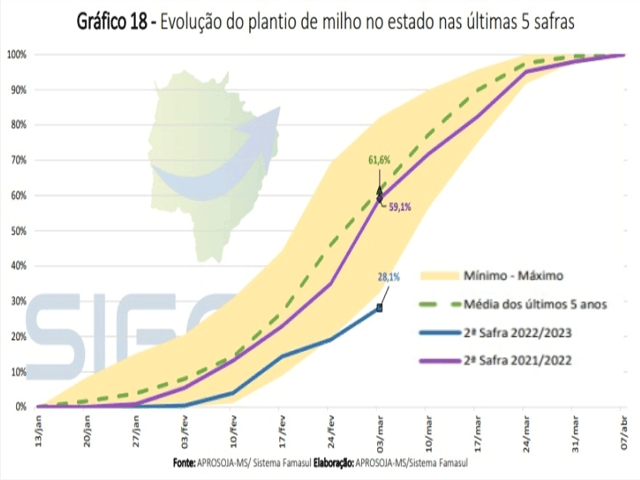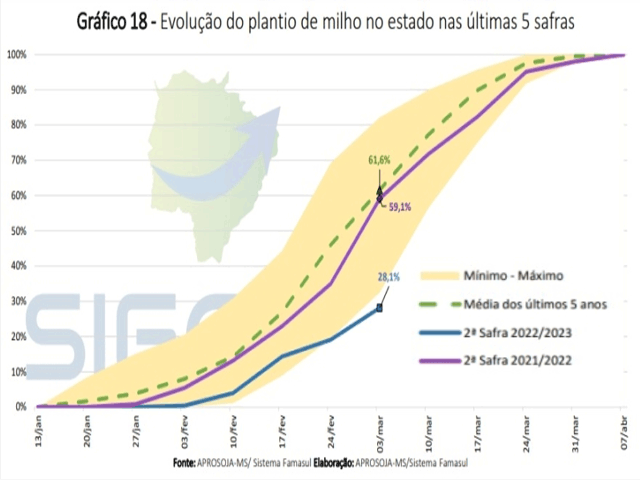South America Calling
Brazil's Safrinha Corn Season in Focus
La Nina has officially been laid to rest by NOAA as of Mar. 9. The Pacific Ocean sea-surface temperatures are close to where they should be for this time of year. However, it takes the atmosphere some time to respond to the new conditions, likely a good six weeks. That means weather should get back to "normal" starting in May.
However, that means for South America's growing season, La Nina still has an influence, and perhaps a profound one in regard to second-season (safrinha) corn in Brazil.
Looking at previous years, even as neutral conditions have taken over in the Southern Hemisphere autumn, there is a tendency for the wet season in Brazil to end early. Typically, for a state like Mato Grosso, the largest safrinha corn production state in Brazil, the wet season ends in the first few days of May. However, under the influence of La Nina, the season usually ends sooner, sometime around mid-April. During the past two La Nina-controlled autumns, 2021 and 2022, the wet season ended in mid-April -- though an argument could be made that it occurred in late March for the 2022 season with a brief rain in the middle of April to finally end it.
P[L1] D[0x0] M[300x250] OOP[F] ADUNIT[] T[]
Planting time ultimately plays the largest role in how the safrinha crop turns out, especially during these typical La Nina years. In 2021, planting was significantly delayed due to first-crop soybean planting delays the previous spring by a couple of weeks and then again due to wet weather in February 2021. Planting delays for safrinha corn were the most delayed in the previous five years and the crop production immediately suffered. 2022 was unusual in that the soybean planting was on-time. And, likely due to the previous year's issues with safrinha corn production, planting for the 2022 safrinha season was one of the earliest in decades, which ultimately produced a record crop, even though the wet season ended significantly early.
In 2021, the end of the wet season played a large role in reduced crop production, but another risk that came with it likely caused the most damage. A series of three large-scale frost events in June and July 2021 coincided with pollination and fill periods for the corn, significantly affecting yields. Frost events are more likely to occur in June and July under La Nina years, even when they go into neutral beforehand. The 2022 season may have had some limited frost damage, but the crop was much more advanced and not nearly affected as the 2021 safrinha season. But again, frosts will be a risk factor to consider for June 2023.
Safrinha planting in 2023 was initially delayed across Mato Grosso due to wet conditions. However, with some late breaks in February, most of the crop was planted before the primary window closed. But still, a good chunk of the crop in this state was planted late, an estimated 20% of the crop.
In the states of Parana and Mato Grosso do Sul, just south of Mato Grosso, the delays have been more significant due to continued heavy rain. As of Mar. 13, only 61% of Parana's safrinha crop has been planted and they should be nearing the finish line. The situation is worse in Mato Grosso do Sul, with the latest estimates at only 28% complete as of Mar. 8 according to Famasul (Mato Grosso do Sul Agriculture and Livestock Federation). That is easily the slowest in the last five years and questions arise about the potential for producers to switch to winter wheat instead.
These two states, which according to USDA are responsible for approximately 30% of the combined safrinha corn crop, are going to be very susceptible to the dry season and frost potential. Models are suggesting that good rains continue through early April, with some relief to both states next week that should help them catch up with planting. However, models diverge in mid-April about whether or not the wet season rains continue or dry up. While history suggests that we will have to watch for the frost potential, models are not sensitive to that potential just yet.
To find more international weather conditions and your local forecast from DTN, visit https://www.dtnpf.com/….
John Baranick can be reached at john.baranick@dtn.com
(c) Copyright 2023 DTN, LLC. All rights reserved.





Comments
To comment, please Log In or Join our Community .